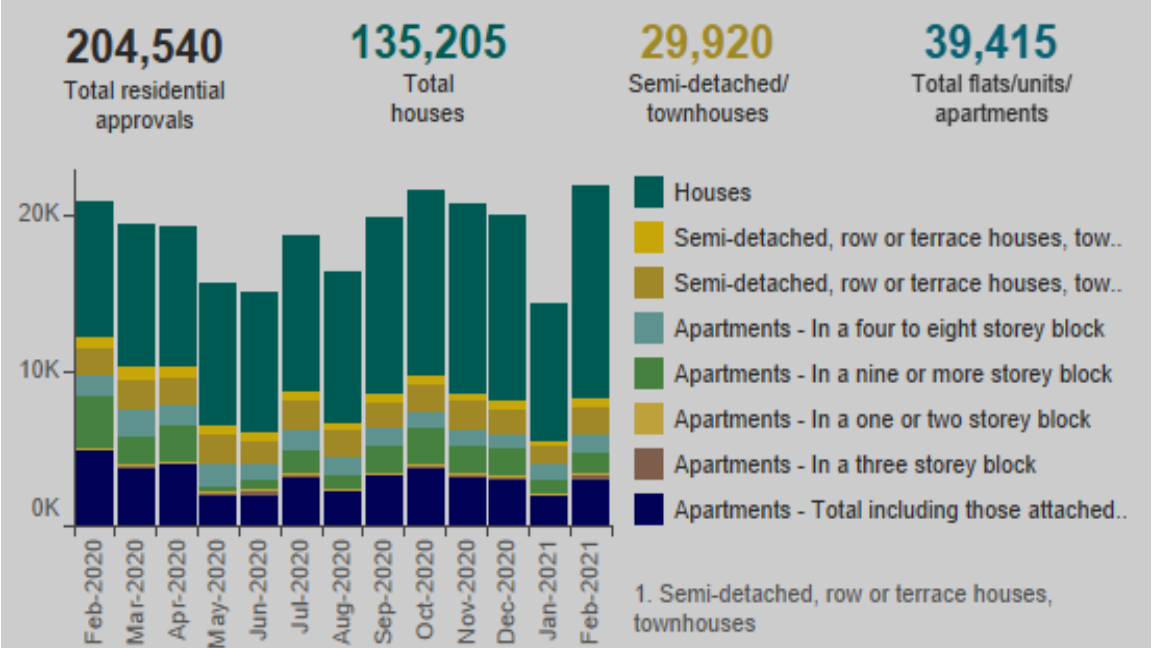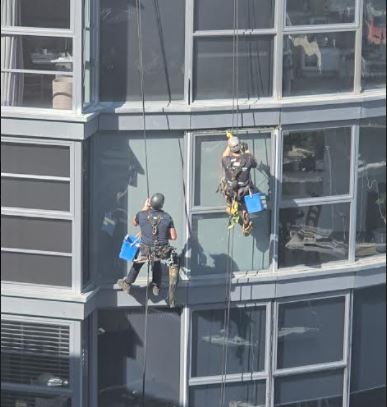If there's something strange In your neighborhood Who ya gonna call? (Ghostbusters)
If there's something weird And it don't look good Who ya gonna call? (Ghostbusters)
If you're seeing things Running through your head Who can ya call? (Ghostbusters)
With acknowledgements to Ghostbusters, Ray Parker Jr, provided to YouTube by Arista Records.
Part 1
Buying a property off-the-plan starts as an exciting dream created by the visions of architects and designers, but it's often a world away from the harsh reality of living there a few years later. Water leaks, building cracks, noisy neighbours and old sofas dumped out the back become the ‘strange and weird’ ghosts facing owners after they settle on their dream. Unfortunately, there are no friendly ghostbusters for property defects when "there's something weird and it don't look good". Media reports of people queuing around the block to buy apartments launched off-the-plan are commonplace. At that stage, apartments (and townhouses and house-and-land packages) are designs subject to change, deliverable in three to four years. The buyers stand anxiously waiting for hours, eventually finding their way to a sales desk where the agent shows them a chart with lots of red dots – apartments already sold – and the buyers have a short time to make a massive commitment. It’s probably the biggest financial decision of their lives and it’s made based on a glossy brochure, a fancy display unit and a need to decide immediately. For example, as reported in Domain: “A crowd of 100 eager buyers queued in the city’s early morning chill from 7am on Saturday keen to snag a unit in the Infinity by Crown development at Green Square. By 10am the crowd had ballooned to 300. “We released 326 apartments and 105 apartments sold in the first hour,” said Crown Group Chief Executive Iwan Sunito. “We sold $100 million worth of apartments in the first hour and $170 million by the end of the second hour. The total value of apartments sold had reached $350 million at 3pm.” Stand at the back of this queue for a couple of hours and see who can resist buying an apartment when they reach the front.The harsh reality starts to hit you
You know little about the problems you may face when the inevitable defects surface. It is easier to replace a vacuum cleaner or fix a car under warranty than it is to remedy the defects on a multi-million-dollar apartment. The agent’s job is to sell the dream, and by the time defects in the building are discovered, the developer and builder may be long gone, or indifferent to your problems. On final inspection before settlement, you walk around your new apartment holding the original brochure, and you now see the floor plan is ‘not to scale and for illustration purposes only’. Wasn’t that wall supposed to be a window? The view from the balcony is of a nother building, what happened to the trees and water? The rooms feel small, is this apartment really 150 square metres (sqm)? Why does the kitchen bench intrude into the living room? What’s that stain on the window sill … is it leaking? ... and the traffic noise is worse than you expected. You will need a lot more than a tape measure to sort this out. Every completed apartment building has defects, and even if you arrange a building inspection before completion, many details are missed by someone charging $2,000 to walk around for a few hours. Of course, it is better to deal with long-established developers and builders with good reputations, but don't expect them to write cheques willingly. While they want to protect their name, dealing with them can be an exhausting physical, mental and financial drag. The disaster at Opal Towers was built by Icon, a leading construction company recently appointed for the $60 million renovation of North Sydney Olympic Pool. Icon blames the engineering firm, WSP Structures, and both the developer, Ecove, and the Sydney Olympic Park Authority (SOPA) are involved in legal actions. Somewhere amid the blame shifting are the owners trying to get on with their lives in an apartment nobody wants to buy, claiming there are over 500 new defects.Whoyagonnacall? Knowing what you don’t know
There are about 700,000 apartment buildings in Australia. In the latest figures shown below, 70,000 apartments and town houses were approved in the 12 months to end February 2021. The most common defects are internal and external water leaks and structural cracks. According to a 2019 paper by property specialist, Dr Nicole Johnston of Deakin University, in a study of 212 building audit reports with 3,227 defects from around Australia: “85% of all the buildings analysed had at least one defect across multiple locations. The result was slightly higher in New South Wales (97%) and slightly lower in Queensland (71%) and Victoria (74%). The average number of line item defects identified per building was 14 … The average number of construction systems (noting that 13 construction systems formed the classification matrix) affected by defects per building was 5.93.”Number of new residential buildings approved, 12 months to February 2021

Source: Australian Government, Institute of Health and Welfare
With a defect hit rate of 97%, anyone buying off-the-plan in New South Wales should assume their building will have defects. So here’s Part 1 of a list to show what you don’t know.1. Who will identify the defects?
You move in but you know little about whether the building was constructed according to the approved design drawings, especially items outside the apartment such as fire protection, drainage, electrical equipment and water damage prevention. For example, a water leak at the prestigious 104-unit King & Phillip building in Sydney has delayed settlement until mid-year. In fact, you don't even know what is your personal responsibility inside the apartment and what is the common property of the building. The front door and windows are common property, but what about exhaust fans, lights and aircon units? Will the body corporate fix faults or will you? The first major storm is a test for any large building and you discover a couple of your windows leak. In other apartments, wet floorboards are already lifting. Some owners suspect the cladding is flammable. Whoyagonnacall? Get ready to start arguing over who is responsible as the developer points to the builder who blames the sub-contractors. Prepare for expensive consultants' reports and special levies, and bring in an experienced legal adviser. Many problems might not surface for five or 10 years, who is responsible then? The Home Building Act, NSW, section 18B, says: “Warranties as to residential building work 1. The following warranties by the holder of a contractor licence … are implied in every contract to do residential building work a) A warranty that the work will be done with due care and skill and in accordance with the plans and specifications in the contract.” The owners via the Owners Corporation (OC) and Strata Committee (SC) have two years to lodge a claim against the builder to (in the case of NSW) the NSW Civil and Administrative Tribunal (NCAT). Identifying and quantifying defects is specialist work, requiring the SC to hire engineers and construction experts. Who will do the identification and liaison work on behalf of the owners? The Chairman of your SC is a retired 80-year-old teacher. He’s a nice guy happy to run the SC for something to do, but he does not have the skill, resilience or desire to manage a major project such as this. Whoyagonnacall to do the work? Is it you? What about the building manager, what do they do? Building managers are not a maintenance service for all owner problems. They may act as a coordination point, and while they may call the builder and ask them to fix a problem, they do not have the skills or time to monitor the work and decide if the job was done correctly. They will not manage a major dispute for you. Their responsibilities only extend to common property, but does that include your blocked drain? Who knows? Surely you can rely on the occupation certificate, or a building certifier such as the Principal Certifying Authority (PCA). Let’s put aside the fact that the certifier might be a mate of the builder and relies on them for work. The usual certification process is that each contrac tor is required to sign a piece of paper saying the job was done according to the contract, in both quality of work and materials. Of course the contractor signs this, but that is no security that it actually happened. Cheap wiring with flammable casing? Why not save a few dollars? The certifier inspects little if any of the actual work. Anyway, much of what matters such as façade fixings, fire prevention, electric cabling and drainage systems is buried under years of work or located behind walls and ceilings. After six months, your shower drain is blocked with your hair because the builder poured waste cement down your drain. No certifier will predict that, but whoyagonnacall? The only way to know about many problems is when something stops working, often years later, or in an emergency when the equipment fails. Let’s say you find problems during the final inspection before making the settlement. Consider the plight of this buyer reported in The Sydney Morning Herald: “A Sydney apartment buyer stands to lose her life savings or be forced to buy into a 300-unit development that she has been warned contains major defects. Maryam Behrouz’s pursuit of the great Australian dream has become ‘a nightmare’ after being told she must settle the $625,500 purchase in Kellyville because the building has been ticked off by a private certifier.”2. Who will fix and pay for the defects?
Who are you chasing anyway? Many builders and developers set up $2 companies for each project, and your apartment was built by Great Ocean Road 007 Pty Ltd. Whoyagonnacall to find any money there? It’s likely that the builder and developer are different companies. The developer is the owner of the project and the seller of the properties. They employ an architect, then give the plans to the builder. Often, the architect steps away from the project at this stage, so the expert who did the original design is no longer involved. Don't expect them to review the final product. Construction is a competitive business, full of tight margins, militant unions and expensive trades. The builder studies the plans and specifications and quotes $50 million for the job on a 3% margin, hoping to make $1.5 million. The job is awarded, the developer hands over the site to the builder, who sets to work deciding how 3% becomes 6%. Welcome to cost cutting. If the developer does not employ the necessary skills to watch the builder at every stage, then the European fittings become Chinese copies, the sound proofing and insulation is thinner, the ducting runs from the kitchen over the bedrooms to reduce the distance but makes a noise when people are in bed. Step-by-step, it’s an inferior build that will be expensive to repair five or 10 years after moving in, long after any warranties have expired. Most frustrating is that the builder saved $10,000 on something that might cost $100,000 or more to fix by the time the ceiling or walls are removed. Even if the builder and developer are well-established, major listed companies, they deal with recalcitrant owners and committees every day. They are experts on the issues while the owners are bankers, teachers, nurses, farmers and fund managers. It is familiar ground for the experts, and they bat problems out of the ground every day. You need help but whoyagonnacall? NCAT can only adjudicate on matters worth less than $500,000, and major defects often cost far more. Next step is either mediation (more work for you), a local court or the Supreme Court. Now watch the legal and consultant bills mount up.3. Who will enforce and manage the work?
Let’s say your building is having problems with water leaking, noises between apartments and flooding in the car park, so you call in an engineering consulting firm to do a thorough audit. A special levy is needed to fund this $50,000 study of the building, which some owners are unwilling to pay. After heated arguments and lobbying, you finally push it through the SC. The building manager knows a firm (is it his mate?) who can do the audit work, and three months later, the consultant delivers a 100-page report. What will you do with it? Hire another consultant to read it? Nobody on the SC is a builder or an engineer, and you don’t have a clue what all the detail on fire regulations, building codes, minimum this and maximum that even mean. Whoyagonnacall? So you hire the consultant at $450 an hour to liaise with the developer and builder to fix the defects. Let’s be optimistic and say you eventually make progress with the builder who agrees to fix things. Whoyagonnacall to manage the project on your side? Does the consultant visit your property each time the builder turns up? The builder will do the least possible to get you off his back. He will send over a bloke with a tube of silicone to fix the water leak and claim the job is done. In the next storm, maybe six months later when the rain is heavy and the wind is in the right direction, it leaks again. The real cause is a crack in the facade a metre from the window but whoyagonnacall to find it? A year later, with the clock ticking before the two-year deadline under the Home Building Act, you decide the builder is full of empty promises and delaying tactics. You need a specialist lawyer to advise of your rights and how to make a claim to NCAT, or is it a court? The SC Chairman is now the former SC Chairman because he never signed up for all the hassles. If you don’t do the work, maybe nobody will. It will be a stroke of luck if your SC has the resources to handle a major prosecution of a builder or developer. Even when the work begins, how are external leaks fixed on a completed building? The scaffolding is long gone, so workers hang over the edge on ropes, 30 storeys above the ground. The men in the picture above are not cleaning the windows, they are sealing leaks. Imagine how slow and expensive this is, and neither your building manager nor consultant will know whether the job was done properly. Next time it rains, you may need to send the guys over the side again.
Even when the work begins, how are external leaks fixed on a completed building? The scaffolding is long gone, so workers hang over the edge on ropes, 30 storeys above the ground. The men in the picture above are not cleaning the windows, they are sealing leaks. Imagine how slow and expensive this is, and neither your building manager nor consultant will know whether the job was done properly. Next time it rains, you may need to send the guys over the side again.
4. Is your new dream property even what you paid for?
The design you signed up for is subject to change. The architect gave it to a graphic designer who gave it to the developer who gave it to the builder who gave it to dozens of contractors. Then four years later after a hundred people have interpreted the plans according to their skills, budget and profit margin, you are shown the finished product. Check the fine print in the sale contract. It allows the developer to deliver a property with a 5% variance in size. For variance, read reduction. It might not seem much, but on a 150 sqm apartment, 7.5 sqm is a smaller bathroom, nowhere to put the big screen television or the loss of half a balcony. Did the size allowance include that boxed-in column in the corner which cuts into your living room? Or the empty space at the back of the kitchen cupboards? The value of 5% depends on the apartment. The most luxurious and expensive apartments in Sydney sell for $60,000 to $80,000 a sqm and losing 10 sqm on a 200 sqm apartment is an effective cost of maybe $800,000. Even at $20,000 a sqm, losing 5 sqm is $100,000, plus a loss of the floor space you need. A QC will tell you there is no case for the developer to answer, as you should have known when you signed the contract, four years ago. Surely the basic design must be honoured. Then consider this: "When excited first home buyer Jae Jun Kim went to inspect the one-bedroom apartment he’d bought off the plan in Sydney’s CBD, he discovered something vital was missing: the bedroom. Where the wall to the bedroom and the much-lauded feature decorative glass sliding screen door should have been was … nothing. Instead, the slick one-bedroom apartment in the new 15-storey building The Castlereagh that Kim had paid $560,000 for in October 2012 was actually a studio. He was distraught."5. Who is on the SC and what are the strata fees?
At the first meeting of the SC, full of well-meaning neighbours, busy-bodies and amateur administrators, you will be lucky if everyone is cooperative with the same goals. There are investors versus owner-occupiers, and one group wants to landscape the grounds and the other wants the lowest fees. Will this group of people be capable of years of arguing with expert builders and developers while running a major court case? Nobody in the room is likely to know that under the Strata Schemes Management Act (in NSW), at the first AGM of the SC, the following must be provided by the developer under clause 16: "a) all plans, specifications, occupation certificates, diagrams ... planning approvals, complying development certificates, 'as built' drawings, compliance certificates, fire safety certificates and warranties ... the initial maintenance schedule, any interim report or final report of a building inspector ..." ... on and on it goes. Even if you are in an older building, does your SC have these documents? Do you expect the developer or builder to turn up with these if you don't demand them? You notice someone at the SC who seems to understand how the industry works. Some builders and developers retain apartments which gives them a legal right to attend all SC meetings. They can influence the outcome by speaking forcefully about rights and obligations (although they cannot vote) and create unlimited delaying tactics. Say the SC needs to raise a special level of $200,000 to prepare a court case. An experienced advocate can make the case that it’s a waste of money better spent on fixing the defects. At the initial sales pitch, the real estate agent has an incentive to talk down the strata levies, especially when a development has a high proportion of investors rather than owner occupiers. But it is guesswork. The first meeting of the SC sets the strata fees, and you can be sure the consultant brought in to advise on the fees will bring a new dimension. You need a sinking fund to replace the lifts at some time and the entire building will need repainting after 10 years. A 24-hour concierge costs $350,000 a year, plus maintenance of the gardens and cleaning of the pool, the gymnasium and the common property. Buyers who love the idea of all those amenities need to realise they will pay for maintenance and eventual replacement. Whoyagonnacall?Part 2
In most cases, apartments are sold off-the-plan to enable the developer to obtain finance to begin construction. Banks often require pre-sales of 60% or more, and a project may not proceed without this early progress. Buyers will receive a refund of their deposit but they may have missed out on other opportunities while out of the market. Buyers enter a contract and have a legal obligation to settle. Many buyers believe their worst-case scenario is forfeiting the 10% deposit but the developer may take legal action to recover other costs, such as losses or legal expenses in reselling the property. Purchase obligations are not subject to finance and the buyer may be unable to arrange a loan three years after the original purchase as their circumstances may change. A bank will only commit once the building is almost complete. Here are five more risks:6. What internal and external noises will the apartment suffer?
You loved those parquetry floors in the display apartment, all those years ago. Guess what! Your neighbours upstairs have the same floor. Was the sound deadening underlay installed properly? Why do they thunk-thunk around their apartment wearing hobnail boots? It goes on day and night until it drives you crazy. Whoyagonnacall? Viewing a display apartment gives no hint of the noises inside your actual property. The sounds of traffic or trains or planes might be poorly insulated against, and even if the windows are double-glazed, you will not want to keep them closed all summer. What’s that annoying noise from the air conditioning unit next door? What’s with the music, this is not a party house. You’re kidding me, an Airbnb. Apartment buildings are sometimes shared by hundreds of people. Don’t assume they read Jane Austin each night. Australia’s top-rating television programme is Married at First Sight. Those cretins you ridicule on television are your new neighbours. Any acoustic engineer will tell you that large buildings are never silent. There is a vast amount of equipment running 24/7, including water heaters, aircon units, lifts, garbage chutes, ventilators, exhaust fans and electric shutters. Buy the apartment above the security doors to the underground garage and you will hear the opening every time you sit on the balcony. Whoyagonnacall? And here is the irony. The noise from each piece of equipment is masking another sound. You might hear an annoying hum from a machine which the builder agrees to fix, but when that machine is silent, you hear another one. Too low a background noise level may mean you can hear other noises in the building. And you know how they say your brain switches off to repetitive noises? Don’t believe it. Some noises are there to stay so just get used to them. Or do you expect the conversation to go like this during your final inspection? You: The agent told me there would be special thick glass to insulate against the road noise. Developer: Oh, damn, did we use normal glass? Sorry about that. Let’s put the scaffolding back up and replace all the glass in all the windows with thicker glass. That will cost about $2 million but no worries, we’ll pay for it and have it done quickly with the least inconvenience to the owners. To misquote from The Castle, you're dreamin’.7. What are the views really like, and what’s that smell?
For many apartments, the view is a critical part of the value and price, and crucial for the amenity and pleasure of a new home. A problem with the view is not like replacing a dishwasher. It might be beyond the control of your anyone on your project. For example, a different developer may have acquired land next door and it would be devastating to inspect your new home only to find another building only 11cm from your balcony.When the marketing brochures are prepared, the photographs or artist drawings often represent an image from the penthouse, the best view in the building. Pity that’s where someone else lives. From your apartment, the view may be straight into someone’s dining room. I recently inspected a new construction with an existing 527-unit Mirvac building blocking the harbour views below the 34th floor. A friend inspected a high-end off-the-plan development on Sydney’s north shore. The penthouse was priced at over $12 million and the quality of the harbour view was critical to the value. He was sceptical of the marketed view pictured as if the apartment were on the water, whereas it was set well back, albeit with an elevated outlook. So he hired a drone and pilot to take photographs from the actual location of the future penthouse balcony and it was a vastly inferior view over houses. He did not proceed. A common marketing technique is to take a promotional shot through a gap, ignoring the fact that the actual perspective is ‘framed’ by two large apartment blocks either side of the view. The water view? Who are they kidding? In some places, it’s a tidal mud flat, and when the tide goes out, the water is 200 metres away. Maybe you like the look of mud clinging to the roots on mangroves, but what about the smell? There are suburbs with water views where the smell at low tide forces residents to close the windows. Nobody who buys off-the-plan thinks about smells. You know that restaurant space you saw in the glossy brochure, the ground floor retail showing happy people meeting in a great community scene. Well, the kitchen exhaust is near your balcony, and each night, the smell of tandoori chicken wafts into your living room. No matter how much you like tandoori chicken, you don’t want to smell it every night.This man’s balcony is just centimetres from a new apartment tower and he’s not happy about it @LouisaCheatley #7NEWS pic.twitter.com/EyHQSLY5Ac
— 7NEWS Melbourne (@7NewsMelbourne) July 13, 2019





